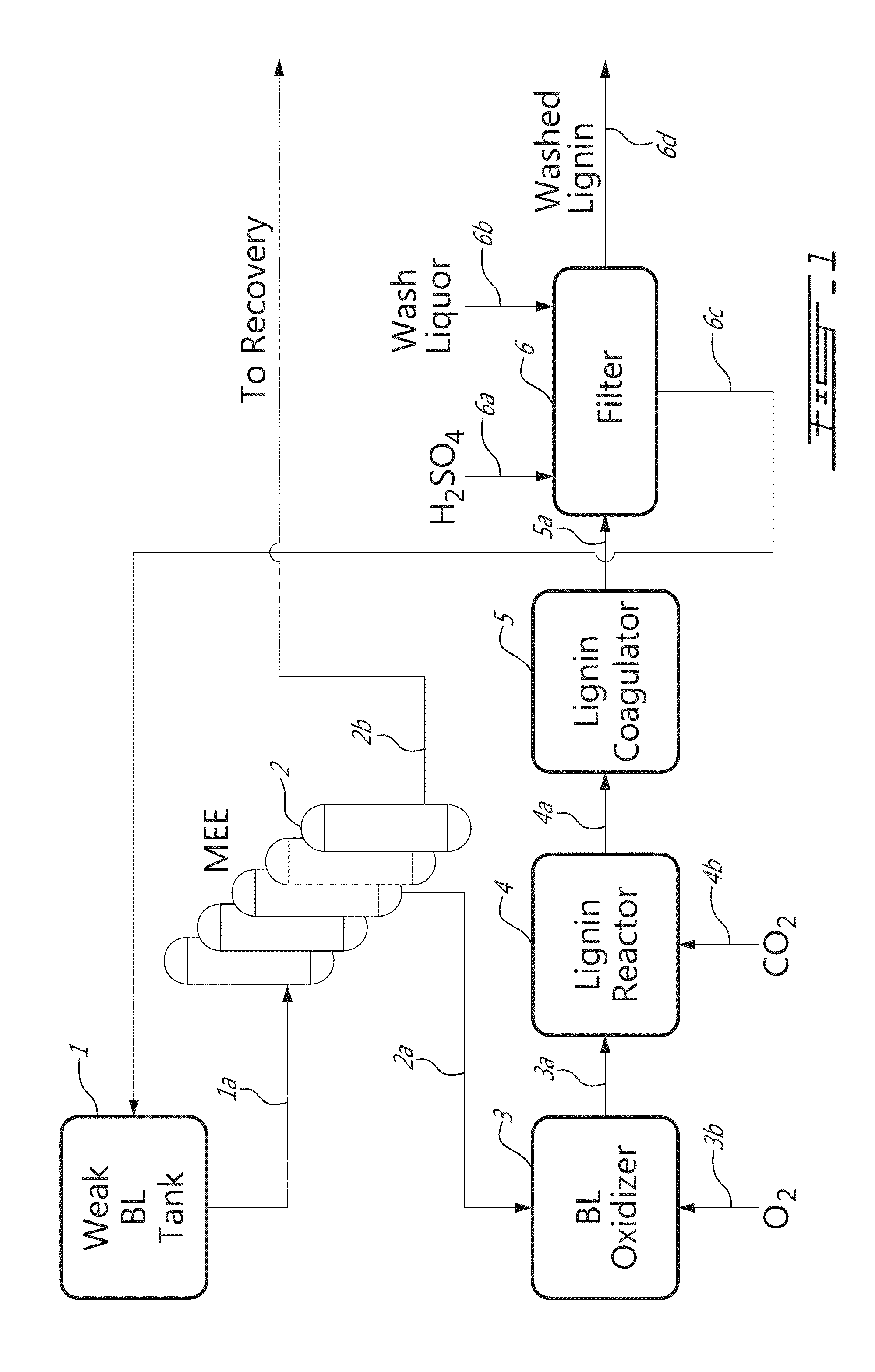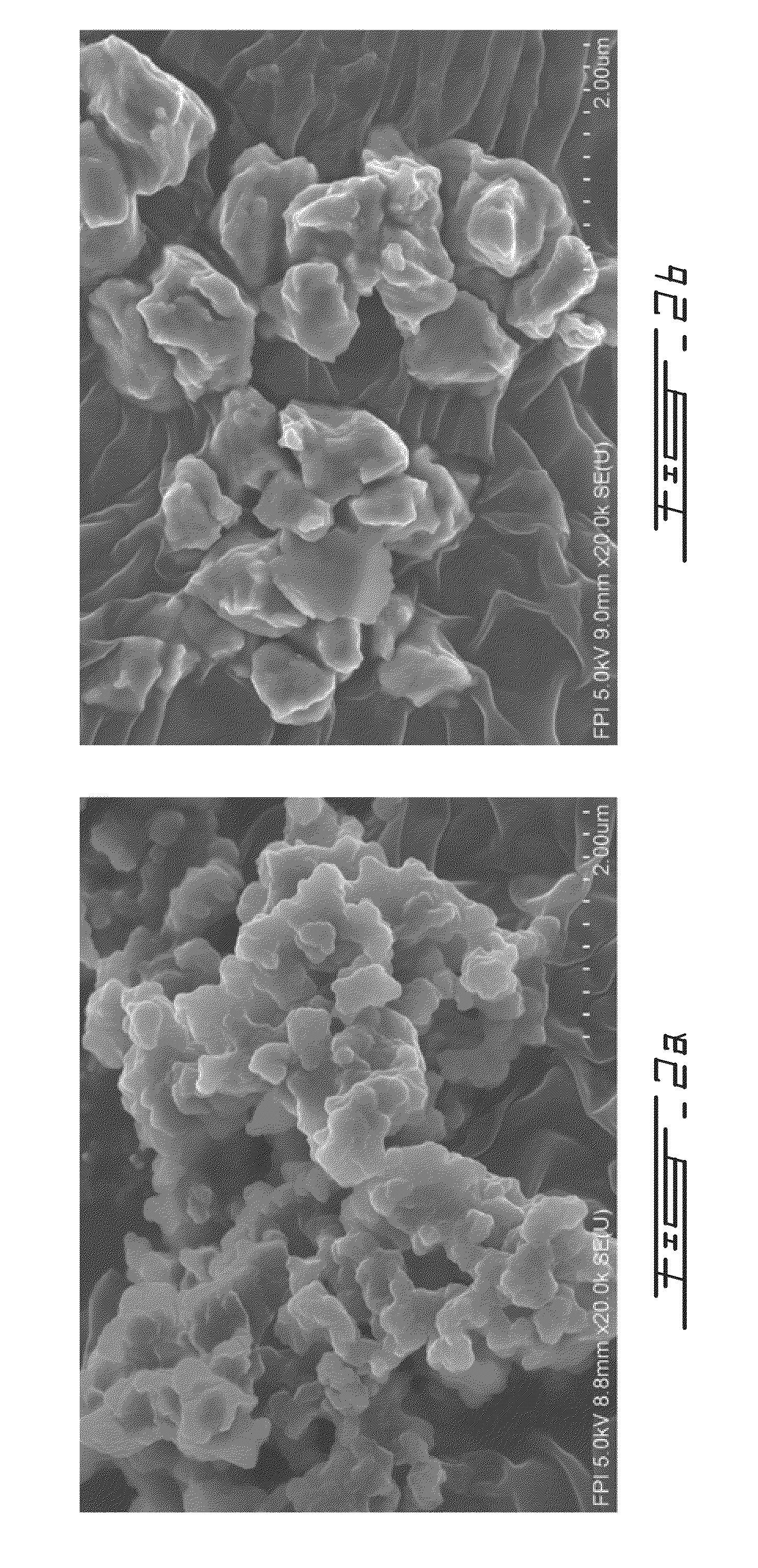Method for separating lignin from black liquor
a technology of black liquor and lignin, which is applied in the field of separating lignin from black liquor, can solve the problems of high capital cost, unreasonably low filtration rate, and difficulty in separating lignin from acidified black liquor solutions
- Summary
- Abstract
- Description
- Claims
- Application Information
AI Technical Summary
Benefits of technology
Problems solved by technology
Method used
Image
Examples
example 1
Lignin Precipitation and Filtration
[0047]Lignin was precipitated from 150 L of black liquor using CO2. For the purpose of improving the lignin filtration properties, the black liquors were oxidized by blowing oxygen into the liquor at 75° C. using a sparger located at the bottom of the reactor. The oxidation reaction was monitored by measuring the amount of sulphide in the liquor and stopped at a sulphide concentration of about 0.6-0.8 g / L. The residual sulphide was monitored on-line using the BLOX sensor previously developed at FPIinnovations Paprican Division. Lignin precipitation from black liquor was conducted by blowing CO2 into the black liquor solution using the same sparger that is used for the oxidation step. The precipitation temperature was kept at 75° C. The precipitation was stopped at pH around 10. The lignin slurry was agitated gently in the same tank in order to allow the lignin particles to grow. After coagulation at 65-70° C., the lignin slurry was filtered using a...
PUM
| Property | Measurement | Unit |
|---|---|---|
| size | aaaaa | aaaaa |
| temperatures | aaaaa | aaaaa |
| pH | aaaaa | aaaaa |
Abstract
Description
Claims
Application Information
 Login to View More
Login to View More - R&D
- Intellectual Property
- Life Sciences
- Materials
- Tech Scout
- Unparalleled Data Quality
- Higher Quality Content
- 60% Fewer Hallucinations
Browse by: Latest US Patents, China's latest patents, Technical Efficacy Thesaurus, Application Domain, Technology Topic, Popular Technical Reports.
© 2025 PatSnap. All rights reserved.Legal|Privacy policy|Modern Slavery Act Transparency Statement|Sitemap|About US| Contact US: help@patsnap.com



